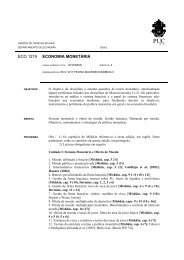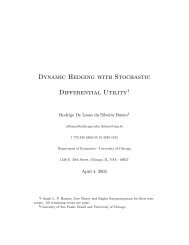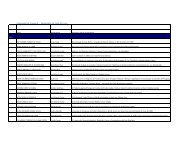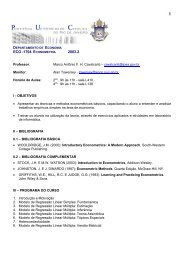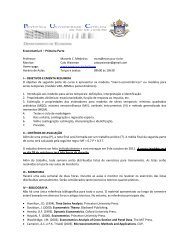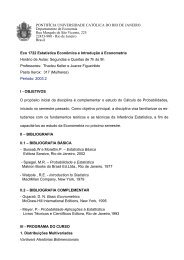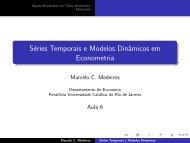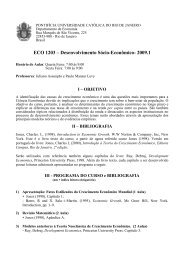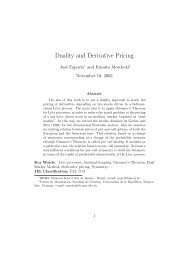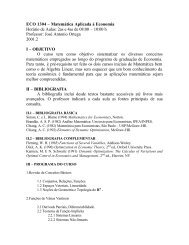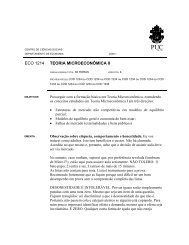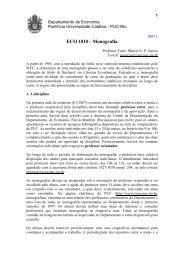Smooth Transitions, Neural Networks, and Linear Models - CiteSeerX
Smooth Transitions, Neural Networks, and Linear Models - CiteSeerX
Smooth Transitions, Neural Networks, and Linear Models - CiteSeerX
You also want an ePaper? Increase the reach of your titles
YUMPU automatically turns print PDFs into web optimized ePapers that Google loves.
often called the decay constant. The usual penalty is the sum of squared parametersÉ £ Ì ´©µ Ô ¾ ·¬ ¾ ·Ô¼ ½ ½ ½ ¾ (16)The forecasting ability of the ANN model can depend crucially on the decay constant , especiallywith small in-sample periods. If is too large, the network may still overfit, <strong>and</strong> if it is too small, theANN model does not have an adequate fit in the estimation period. Usually, different types of parametersin the ANN model will usually require different decay constants for good forecasting ability.One approach to determine the optimal regularization parameter is the Bayesian framework ofMacKay (1992), where the parameters of the network are assumed to be r<strong>and</strong>om variables with wellspecifieddistributions. The regularization parameters are related to the unknown variances associatedwith these distributions <strong>and</strong> can be estimated with statistical techniques. Foresee <strong>and</strong> Hagan (1997)give a detailed discussion of the use of Bayesian regularization in combination with the Levenberg-Marquardt optimization algorithm. The main advantage of this method is that even if the ANN model isover-parametrized, the irrelevant parameter estimates are likely to be close to zero <strong>and</strong> the model behaveslike a small network.All the ANN models in this paper are estimated with Bayesian regularization in combination withthe Levenberg-Marquardt algorithm. The starting-values for the parameters are selected by the Nguyen-Widrow rule (Nguyen <strong>and</strong> Widrow 1990).4 Benchmark <strong>Models</strong>In this section we outline two simple linear models that are often used as benchmark formulations in thefinancial time series literature.4.1 The R<strong>and</strong>om Walk ModelConsider the following R<strong>and</strong>om Walk (RW) model for the level of the exchange rate seriesÔ Ø « · Ô Ø ½ · Ù Ø (17)10



